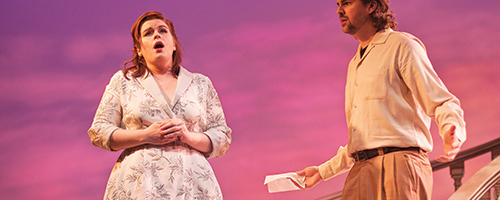Student rec center takes form
A detailed architectural study for the new student recreation center building is now complete and on display, with construction hopefully beginning in 2006.
Students may learn details and ask questions at an ASPSU information session Thursday, Feb. 17, from 11:30 a.m. to 1:30 p.m. in Parkway North.
Drawings of the tentative design by OPSIS architectural firm are displayed on the Smith Memorial Student Union Building main floor. Christy Harper, student body president and long-time rec center champion, emphasized that the architectural studies are not set in stone.
"There will be changes," she said. As to how much it will cost, she said, "We have only rough projections. The rec center building only would be about a $20 million construction." That leaves open the cost of furnishing and equipping the building, depending on the final design.
Before construction can begin, the present Portland Center for Advanced Technology Building (PCAT) at S.W. Sixth Avenue and Harrison Street must be torn down. As to when that can happen, Portland State must await funding from the new state legislature, which convened this month.
Mike Irish, director of facilities, said, "If legislature funds are made available, demolition would begin in the spring or summer of 2006." Completion of the new building depends on demolition of the old, with the most optimistic prediction being a 2007 completion of the rec center.
The architectural studies for the rec center show the front of the building facing north, providing a fourth side to the Urban Center complex. The lobby entrance would face the Urban Plaza, with retail outlets and an outdoor center occupying the main floor.
Two levels of parking would occupy the basement. The second floor would house a pool, lockers, outdoor center and climbing wall. Emphasis on the third floor would be on fitness, with cardio equipment and free weights. The fourth floor would concentrate on three courts for basketball and other court games. The fifth floor study shows an oval track, with the remainder open.
It is on the sixth, seventh and eighth floor that the building takes on a different character. This is where President Daniel Bernstine and the main elements of the university administration would move. A government agency would also occupy up to 40,000 square feet. Does this mean this is not truly a student building?
Absolutely not, emphasized both Harper and Dalton Higginbottom, a member of the student Rec Center Committee.
"We own the building and they will be renting," Higginbottom said. The retail outlets on the ground floor also will be renters.
Harper said that the building is being paid for by bonds. Student activities will realize a small amount of the rent revenue, she explained, "but the rest of the rent will go to pay off the bonds."
The architectural study calls for considerable open space and multi-use space as well as garden elements.
Asked if the funding involves Student Fee Committee money, Harper said, "Absolutely not." The Rec Center is to be paid for by an additional student fee that will vary somewhat as construction progresses.
"The soonest the fee would start would be January 2006," Harper said. "It would be not more than $24." That would be for starters. An estimate last year anticipated the fee escalating to $52 in fall 2007. Imposition of the fee will depend on the timelines for the demolition and construction projects.
The Rec Center project has had its share of critics, primarily students who don’t want to pay the fee. PSU voters approved the proposal for a new rec center at last spring’s elections. Only 1,999 votes were counted in that election. The rec center proposal passed by 12 votes. A total of 912 students voted for it, 900 against it and 187 voters decided not to vote on it.
The rec center project has gone through a number of changes since it first became a possibility. Originally, the preferred site was east of the Helen Gordon Center at 1609 S.W. 12th Ave. This aroused some student protests that the location might force the removal of some historic trees. It also would require moving the Honors College and demolishing another small building.
In late summer of 2004 the administration suggested the PCAT site and student leaders bought into it.
"It puts it in a more central place on the campus," Harper said at the time. "It’s the most high-traffic area on campus and has great visibility."
Another proposal from the administration had been to build housing on top of the rec center portion. This plan was dropped when it was found to be in conflict with restrictions on new housing by the Portland Development Commission.





